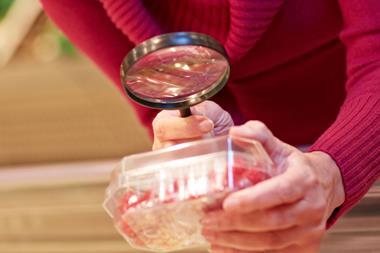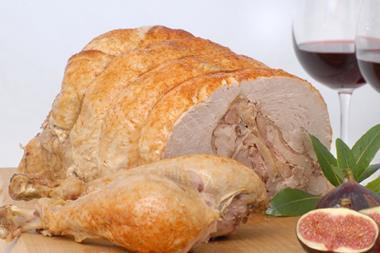At the height of the Horsegate scandal, FSA CEO Catherine Brown told The Grocer the industry needed to focus on… campylobacter in chicken. It was an extraordinary position to take in the wake of the biggest food safety scandal in years.
With the horsemeat enquiry now over, (albeit that the FSA has only woken up “in recent weeks” that it doesn’t have the in-house skills and expertise to set up the Food Crime Unit as envisaged, according to a deposition to an EFRA Committee last week), the FSA’s focus on campylobacter makes better sense. It is, after all, the biggest source of food poisoning in the UK, affecting an estimated 280,000 people a year and killing 100.
And there is unquestionably more the industry could be doing. The Co-op’s special roasting bags look like an interesting (if partial) solution. Better labelling could also make the dangers more clear. And who knows? Perhaps, over time, a scientific solution could be found – though whether it’s better biosecurity, new steam technology, freezing, cooking or other interventions, no one knows.
But the FSA’s decision to name and shame retailers based on campylobacter levels in the chickens they sell – published this week – is ridiculous. The FSA’s job is to protect consumers, but precisely what conclusions are they meant to draw from this week’s results, which named Asda as the worst-performing retailer and Tesco the best? That they should avoid chicken from Asda – which emerged as the worst performing supermarket in terms of campylobacter with a 78% incidence rate – and shop at Tesco, the best-performing supermarket in the FSA’s tests, with a scarcely better 64% incidence rate? Of course not.
“What conclusions are shoppers meant to draw from the FSA’s naming and shaming exercise this week?”
Adam Leyland, Editor
As a science-based organisation – at least in its formation under Lord Krebs – the agency should know campylobacter is a complex organism, one that’s been around for hundreds of years, is found all over the world, and crucially, is one that refuses to conform systematically to high hygiene or procedural standards.
So the FSA can’t actually offer any advice to the industry. But it doesn’t care. Its position seems to be that it doesn’t have any answers, but that’s not its problem. It’s for the industry to sort. Publish and let the industry be damned.
Even more important, however, is that the FSA offers no clear-cut advice to consumers based on these retailer results, other than to reiterate hygiene guidance – no matter where the chicken is from. This is going to leave consumers feeling confused and scared rather than better informed.
Let’s be clear. If the UK poultry industry could rid chickens of campylobacter such an achievement would be a Nobel Prize-winning feat. If a processor had the answer it would almost certainly seek to patent it. And every retailer would want to shore up exclusive rights. But try as everyone might, campylobacter defies attempts to control it. It is the industry’s curve ball (interestingly, the word campylobacter means curved bacteria).
And the FSA’s provocative approach is not helping. A survey by Which? this week suggests just 30% of consumers know what campylobacter is. So shouldn’t the real ‘naming and shaming’ be over the FSA’s communications efforts?



















No comments yet